28 March 2023
We tell their stories: Scottish World War casualties
Following the launch of the CWGF in Scotland, we tell the stories of some Scottish casualties commemorated by Commonwealth War Graves.
We tell their stories
Scots at war
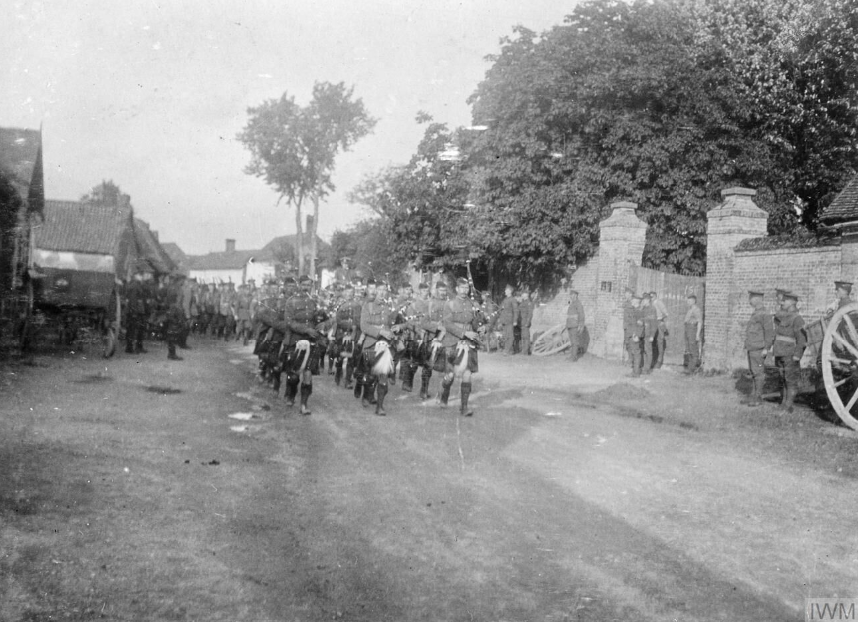
The 2nd Battalion Scots Guards leaving Warlus, 6th October 1916 (© IWM Q 17491)
Scottish soldiers served with distinction on World War battlefields all over the world.
More than 600,000 Scotsmen served in World War One. In 1914, Scotland’s population was around 4.7m meaning roughly 12% of the country’s manpower served in some sort of military capacity during the conflict.
Casualty estimates stand at 180,000 for Scottish troops in World War One – a huge amount, considering the number of servicemen involved in the fighting.
When the world was plunged into the fires of war once more in 1939, Scottish men and women once again heeded the call.
Hundreds of thousands of Scottish people served in the armed forces, medical corps, and Merchant Navy in World War Two, just as they had done 30 years earlier during the Great War.
From the deserts of North Africa, the steaming jungles of the Far East, the stormy seas of the Atlantic, and the blood-soaked battlefields of Europe, Scottish troops were an ever-present fixture of the British and Commonwealth war effort.
World War Two casualties were not as high as the Great War but by the time the war ended in August 1945, more than 57,000 Scots had died.
At the Commonwealth War Graves Foundation, our core mission is to tell the stories of the Commonwealth’s war dead. Their incredible sacrifice helped build the world we live in today.
The Commonwealth War Graves Foundation recently launched in Scotland. We are committed to sharing the memories of the many Scottish casualties in the care of Commonwealth War Graves.
Here is a small selection of Scottish service personnel who gave their lives during the World Wars and their wartime exploits.
Stories of Scottish World War casualties
Archibald Bisset Smith VC
 Image: Archibald Smith, one of two merchant seaman to be awarded the Victoria Cross during World War One (Wikimedia Commons)
Image: Archibald Smith, one of two merchant seaman to be awarded the Victoria Cross during World War One (Wikimedia Commons)
Only two Merchant seamen were awarded Victoria Crosses, Britain’s highest military honour, during World War One.
One of these was Frederick Parslow for his actions aboard HM Horse Transport Anglo-Californian.
The other merchant VC recipient of the Great War was Archibald Bisset Smith.
Archibald, an Aberdeenshire native, had a long, distinguished career in the merchant fleet prior to the outbreak of war in 1914.
By 1917, Archibald was serving as Master of the New Zealand Shipping Company freighter SS Otaki.
Like many civilian vessels tasked with ferrying vital cargo over the world’s oceans during wartime, Otaki had been defensively armed. She had been outfitted with a 4.7-inch gun to defend against predatory enemy vessels. Two Royal Navy gunners had been added to Otaki’s crew too.
In early March 1917, Archibald and Otaki had steamed out of Britain, heading for New Zealand. The first phase of the ships journey passed without incident but all that changed in late afternoon on March 10th.
SMS Möwe, a German Merchant Raider bristling with weapons, spotted Otaki when both vessels were roughly 420 miles off the coast of Lisbon, Portugal.
Möwe moved to intercept her target. Even though she was also a merchant vessel upgraded with guns like the Otaki, Möwe was comparatively heavily armed. The German ship was equipped with four 150mm guns, one 105mm gun, and two torpedo tubes.
Given he was outgunned, Archibald could have ordered the surrender of Otaki. However, his ship was a specialised refrigerated ship designed to carry food over long nautical miles. Otaki was extremely valuable. If he could avoid her scuttling or capture, Archibald would.
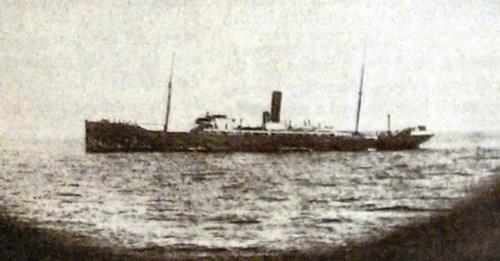 Image: The Möwe, the German merchant hunter that sank the SS Otaki (Wikimedia Commons)
Image: The Möwe, the German merchant hunter that sank the SS Otaki (Wikimedia Commons)
Archibald gave the order to open fire and Otaki guns started singing. The Royal Navy gunners proved accurate, with their fire striking Möwe, causing damage to the superstructure and hull and setting off a coal fire in Möwe’s bunkers.
Möwe returned fire. Otaki took a heavy pounding, outgunned by her opponent. The two vessels traded gunfire for around 20 minutes before Otaki could take no more. A German shell hit her on the starboard aft, causing her to take water. Her single gun was damaged too.
Archibald gave the order to abandon ship but refused to leave his stricken vessel. He went down with his ship along with five more of his crew, including 14-year-old midshipman William Esson Martin.
As he was not military personnel, Archibald was not awarded a Victoria Cross until more details of the Otaki’s sinking were revealed after the 1918 Armistice.
When his actions came to light, Archibald was posthumously commissioned as a Lieutenant in the Royal Navy, and subsequently awarded his VC.
His citation reads:
“For most conspicuous gallantry and devotion to duty when in command of the S.S. "Otaki", on the 10th March 1917.
At about 2.30 p.m. on 10th March 1917, the S.S."Otaki", whose armament consisted of one 4.7 in. gun for defensive purposes sighted the disguised German raider "Möwe", which was armed with four 5.9 in., one 4.1 in. and two 22 pdr. guns, and two torpedo tubes.
The "Möwe" kept the "Otaki" under observation for some time and finally called upon her to stop. This Lieutenant Smith refused to do, and a duel ensued at ranges of 1,900–2,000 yards and lasted for about 20 minutes. During this action the "Otaki" scored several hits on the "Möwe", causing considerable damage, and starting a fire which lasted for three days. She sustained several casualties and received much damage herself and was heavily on fire.
Lieutenant Smith, therefore, gave orders for the boats to be lowered to allow the crew to be rescued. He remained on the ship himself and went down with her when she sank with the British colours still flying, after what was described in an enemy account as "a duel as gallant as naval history can relate.”
Today, Archibald Bisset Smith is commemorated on the Tower Hill Memorial in London.
As for the Möwe, she was able to slink back to German ports, not before sinking two more Merchant Navy ships, but her days as a raider were done. Otaki had inflicted such damage that her days prowling the seas were done.
Wing Commander Hugh Malcolm VC
 Image: Wing Commander Hugh Malcolm (Wikimedia Commons)
Image: Wing Commander Hugh Malcolm (Wikimedia Commons)
Wing Commander Hugh Malcolm had been serving in the RAF for three years when World War Two broke out in September 1939. He’d even survived a serious head injury when his Westland Lysander aircraft crashed in May of that year.
Upon recuperating, the talented airman soon shot up the ranks. Hugh started the war with No. 17 Training Group. By 1941, he was promoted to flight lieutenant and served with El Alamein hero General Bernard Montgomery’s general staff Air Liaison Officer.
Hugh reached Wing Commander status as squadron leader of No.18 Squadron by the end of 1941 at the head of a flight of Bristol Blenheim light bombers.
Hugh and his unit were transferred to North Africa in 1942. While there, his contemporaries noted Hugh’s skill and daring were exemplary. Despite his cut-and-thrust attitude and clear aerial ability, Hugh would not survive the war in North Africa.
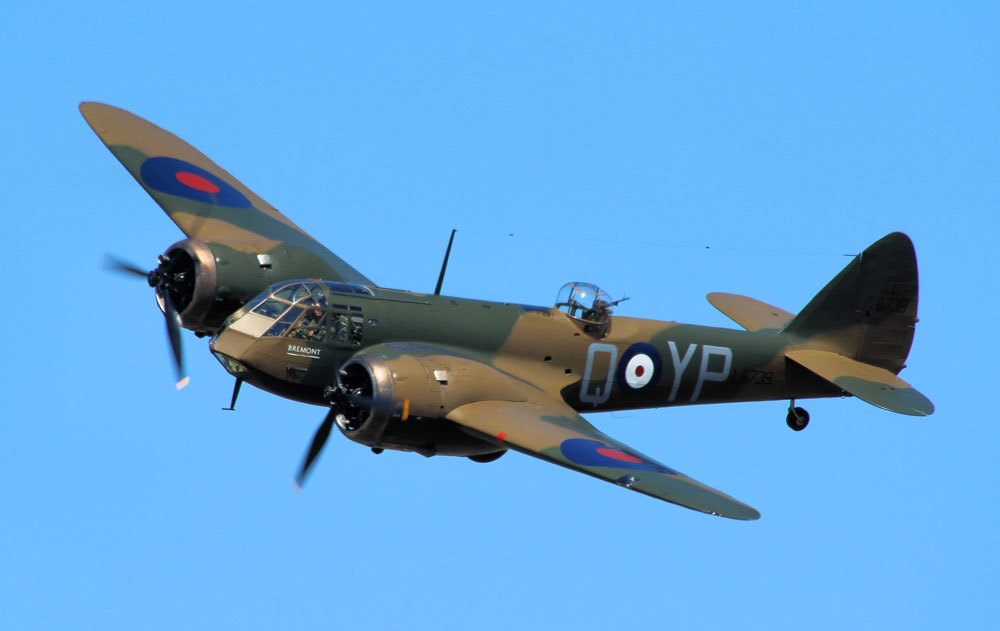
A Bristol Blenheim of the type flown by Malcolm and his unit (Wikimedia Commons)
His Victoria Cross citation details the actions that led to Hugh’s posthumous decoration:
“This officer commanded a squadron of light bombers in North Africa. Throughout his service in that theatre his leadership, skill and daring were of the highest order.
On 17th November, 1942, he was detailed to carry out a low-level formation attack on Bizerta airfield, taking advantage of cloud cover. Twenty miles from the target the sky became clear, but Wing Commander Malcolm carried on, knowing well the danger of proceeding without a fighter escort.
Despite fierce opposition, all bombs were dropped within the airfield perimeter.
A Junkers 52 and a Messerschmitt 109 were shot down; many dispersed enemy aircraft were raked by machine gun fire. Weather conditions became extremely unfavourable and as a result, two of his aircraft were lost by collision; another was forced down by enemy fighters. It was due to this officer's skilful and resolute leadership that the remaining aircraft returned safely to base.
On 28th November 1942, he again led his squadron against Bizerta airfield which was bombed from a low altitude.
The airfield on this occasion was heavily defended and intense and accurate anti-aircraft fire was met. Nevertheless, after his squadron had released their bombs, Wing Commander Malcolm led them back, again and again, to attack the airfield with machine gun fire. These were typical of every sortie undertaken by this gallant officer; each attack was pressed to an effective conclusion however difficult the task and however formidable the opposition.
Finally, on 4th December, 1942, Wing Commander Malcolm, having been detailed to give close support to the First Army, received an urgent request to attack an enemy fighter airfield near Chouigui.
Wing Commander Malcolm knew that to attack such an objective without a fighter escort— which could not be arranged in the time available—would be to court almost certain disaster; but believing the attack to be necessary for the success of the Army's operations, his duty was clear.
He decided to attack. He took off with his squadron and reached the target unmolested," but when he had successfully attacked it, his squadron was intercepted by an overwhelming force of enemy fighters. Wing Commander Malcolm fought back, controlling his hard-pressed squadron, and attempting to maintain formation. One by one his aircraft were shot down until only his own aircraft remained. In the end he, too, was shot down in flames.
Wing Commander Malcolm's last exploit was the finest example of the valour and unswerving devotion.”
Wing Commander Hugh Malcolm is buried in Beja War Cemetery, Tunisia. His VC was the first to be won by a member of the Royal Air Force in North Africa.
Alexander Edwards VC
 Image: Alexander Edwards (Wikimedia Commons)
Image: Alexander Edwards (Wikimedia Commons)
74 Scottish soldiers serving in units from across the Commonwealth were awarded Victoria Crosses during the Great War.
Not all of these were posthumous, but the situations in such extreme bravery and disregard for their own safety VC winners show often result in recipients’ death.
One such posthumous Victoria Cross winner was Lossiemouth native Sergeant Alexander Edwards.
Alexander joined the 6th (Morayshire) Battalion of the Seaforth Highlanders as part of the 51st (highland) Division on 1st September 1914.
After training in England, Alexander and his battalion travelled to France in May 1915 where his unit served in many engagements across the Western Front.
By the time of his Victoria Cross-worthy action, Alexander had been promoted to Sergeant.
31st July 1917. The Battle of Passchendaele.
Passchendaele has become a byword for the type of grinding slaughter World War One is known for. Conditions were particularly harsh, with men fighting against bullets, barbed wire, and thick, cloying, grasping mud.
In the opening stages of the battle, Alexander and his battalion were engaged in fighting to capture Pilckem Ridge, a piece of high ground in the Ypres Salient.
It was during this action Alexander would win his Victoria Cross.
His award citation, from the 14th September 1917 edition of the London Gazette reads:
“For most conspicuous bravery in attack, when, having located a hostile machine gun in a wood, he, with great dash and courage, led some men against it, killed all the team and captured the gun.
Later, when a sniper was causing casualties, he crawled out to stalk him, and although badly wounded in the arm, went on and killed him. One officer only was now left with the company, and, realising that the success of the operation depended on the capture of the furthest objective, Serjt. Edwards, regardless of his wound, led his men on till this objective was captured. He subsequently showed great skill in consolidating his position, and very great daring in personal reconnaissance.
Although again twice wounded on the following day, this very gallant N.C.O. maintained throughout a complete disregard for personal safety, and his high example of coolness and determination engendered a fine fighting spirit in his men.”
Alexander survived the carnage of Passchendaele and was awarded his VC in person by King George V on September 26th 1917. While in Britain, he returned to his home town Lossiemouth to a hero’s welcome. The townspeople gave Albert a gold watch and war bonds for his gallantry.
Returning to France with the 6th Seaforth Highlanders, Alexander saw further action. However, he would not survive the war.
Alexander was killed in action during the German Spring Offensive of March-April 1918.
On 24th March, Alexander was wounded and reported as missing in action, presumed dead. He and his unit had been engaged in a battle with German Stormtroopers around the woods at Bapaume east of Arras in Northern France.
As he has no known grave, Alexander Edwards is commemorated on the name panels of the Arras Memorial.
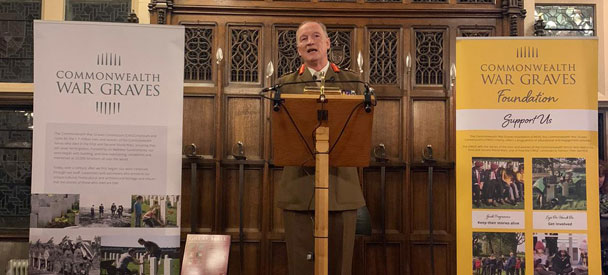
Help us tell the stories of the Commonwealth’s war dead
Keeping the memories of our war dead alive and spreading our shared is history is at the core of what we do at the Commonwealth War Graves Foundation.
If you would like to support our work, please consider making a donation.
Why not become a CWGF member? For just £36 a year, you can help us tell their stories while enjoying some big benefits.
Thank you from everyone here at the Commonwealth War Graves Foundation.

